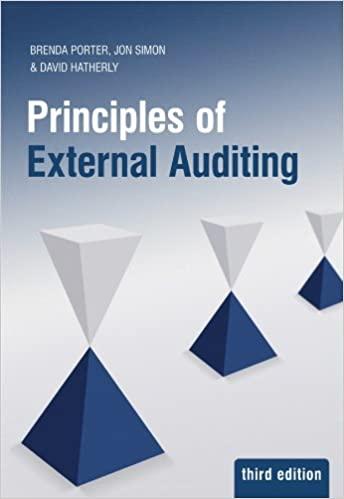Question
Miland Corp. acquired 100% of the stock of Barton Co. on January 1, 2011 for $299,320. On this date, the balances of the subsidiarys stockholders
Miland Corp. acquired 100% of the stock of Barton Co. on January 1, 2011 for $299,320. On this date, the balances of the subsidiarys stockholders equity accounts were common stock, $182,000, and retained earnings, $19,600.
On January 1, 2011, the subsidiarys recorded book values were equal to fair values for all items except the following: (1) accounts receivable had a book value of $56,000 and a fair value of $50,400, (2) buildings and equipment, net, had a book value of $49,000 and a fair value of $74,200, (3) the customer list intangible asset had a book value of $14,000 and a fair value of $72,800, and notes payable had a book value of $33,600 and a fair value of $25,200. Both companies use the FIFO inventory method and sell all of their inventories at least once a year. The net balance of trade receivables are collected in the following year. On the acquisition date, the subsidiarys buildings and equipment, net had a remaining useful life of 6 years, the customer list had a remaining useful life of 7 years, and notes payable had a remaining term of 4 years.
On January 1, 2014, the parent sold a building to the subsidiary for $91,000. On this date, the building was carried on the subsidiarys books (net of accumulated depreciation) at $70,000. Both companied estimated that the building has a remaining life of 6 years on the intercompany sale date, with no salvage value.
Each company routinely sells merchandise to the other company, with a profit margin of 25 percent of selling price (regardless of the direction of the sale). During 2015, intercompany sales amount to $21,000 of which $11,200 of merchandise remains in the ending inventory of the parent. On December 31, 2015, $5,600 of these intercompany sales remained unpaid. Additionally, the subsidiarys December 31, 2014 inventory includes $16,800 of merchandise purchased in the preceding year from the parent. During 2014, intercompany sales amount to $30,000, and on December 31, 2014, $7,000 of these intercompany sales remained unpaid.
The parent accounts for its Equity Investment in the subsidiary using the full equity method. Unconfirmed profits on intercompany asset transfers are allocated pro-rata.
I NEED TO KNOW WHAT GOODWILL IS?
Step by Step Solution
There are 3 Steps involved in it
Step: 1

Get Instant Access to Expert-Tailored Solutions
See step-by-step solutions with expert insights and AI powered tools for academic success
Step: 2

Step: 3

Ace Your Homework with AI
Get the answers you need in no time with our AI-driven, step-by-step assistance
Get Started


